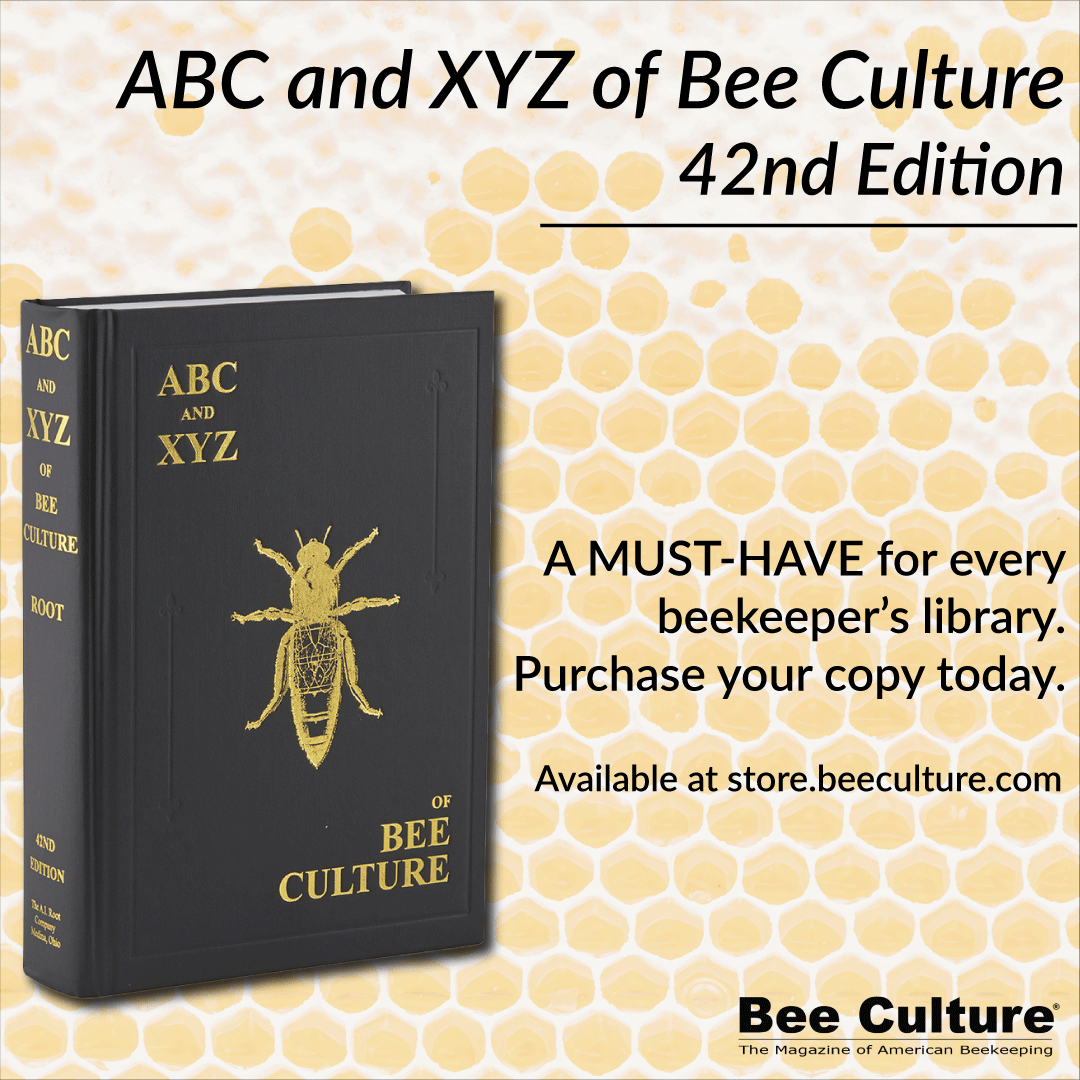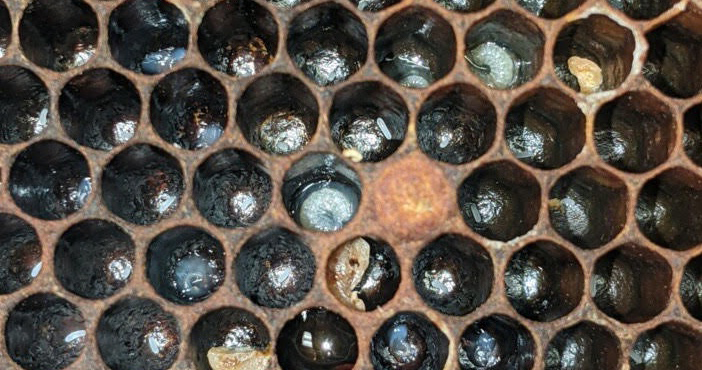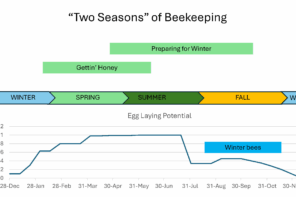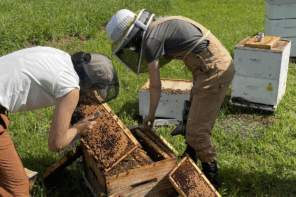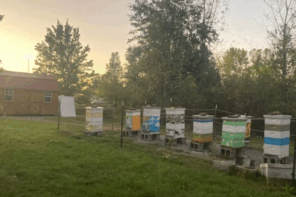Click Here if you listened. We’d love to know what you think. There is even a spot for feedback!
Read along below!
Found in Translation
Egg Sizing
By: Jay Evans, USDA Beltsville Bee Lab
James Tew gave a great review of The Quiet, Quick Life of the Honey Bee Egg in the May 2024 issue of Bee Culture. Honey bee queens have a nearly perfect ability to determine whether their eggs will develop into drones or females. They also control the tempo of reproduction in colonies by changing their egg-laying rates, although workers can regulate the fates of those eggs based on colony resources or signs of disease. What is more mysterious is whether queens can control the size and resources of each egg. Along with the genetic information needed to build a new life, animal eggs receive large or small investments from their mothers. These investments have important consequences for growth rates and eventual body size.
In honey bees, eggs reflect a small investment in offspring when compared to the eventual size of those offspring. They are packed with resources, but each egg is 1/1000 the size of a successfully raised worker bee and maybe 1/2000 the size of an adult queen or drone. If queens laid much bigger eggs, they presumably would fall off the pace of thousands of eggs laid per day. Still, egg size can be an important factor in bee development and it turns out that different queens differ substantially in the sizes of the eggs they lay.
Earlier work showed that younger queens produce more robust eggs than older queens. By the time queens were two years old, their eggs weighed one-third less than those of newly mated queens (Al-Lawati, H., & Bienefeld, K. (2009), “Maternal Age Effects on Embryo Mortality and Juvenile Development of Offspring in the Honey Bee (Hymenoptera: Apidae)”, Annals of the Entomological Society of America, 102(5), 881-888. doi:10.1603/008.102.0514). More importantly, eggs from older queens were far more likely to die before hatching, going from 3.5% mortality in eggs from newly mated queens to 9.5% in year-old queens and 8.9% in two-year old queens. Once eggs hatched, food provisioning by workers meant that newly emerged adults were about the same size regardless of egg size, so the primary cost due to old queens seems to be high egg mortality.
Three recent papers from students and collaborators of Olav Rueppell at the University of Alberta have tackled egg size dynamics in order to see how much egg-size range queens provide, how workers react to that range, when it might be optimal to lay small eggs, and what it all means for colony success. Their first project, described in (E. Amiri, K. Le, C.V. Melendez, M.K. Strand, D.R. Tarpy, and O. Rueppell, “Egg-size plasticity in Apis mellifera: Honey bee queens alter egg size in response to both genetic and environmental factors”. Journal of Evolutionary Biology 33 (2020) 534-543, DOI: 10.1111/jeb.13589) showed that different bee varieties produced eggs of different sizes, ranging from quite small eggs in bees from Hawaii to large eggs produced in California with various selected lines of bees falling between these extremes. Even more strikingly, eggs laid by queens in smaller colonies of the same lineage tended to be 15% larger than eggs laid in larger colonies. The researchers chased this result in a second paper, (B. Han, E. Amiri, Q. Wei, D.R. Tarpy, M.K. Strand, S. Xu, and O. Rueppell (2023) “Group size influences maternal provisioning and compensatory larval growth in honey bees”, iScience 26, https://doi.org/10.1016/j.isci.2023.108546), showing again that smaller eggs were laid in larger colonies. However, those small eggs tended to ‘catch up’ as larvae develop in big colonies so that adult bees raised from small eggs in big colonies (as often found in nature) were the same size as adults raised from the larger eggs of small colonies… However, when small eggs were swapped into small colonies, the egg-deficit kicked in and those eggs developed into smaller adults. Similarly, unusually large eggs placed into large colonies kept growing larger, showing perhaps that nurse workers in these colonies are provisioning with similar foods regardless of initial egg size. The authors also looked at what made up the extra size in larger eggs and found it was distinct. Larger eggs had more stored ‘metabolites’ (molecules used in energy production and use) than smaller eggs and a distinctly more diverse set of proteins. How this extra investment primes them for development and later adult life still remains mysterious. In a third paper, (B. Han, Q. Wei, E. Amiri, H. Hu, L. Meng, M.K. Strand, D.R. Tarpy, S. Xu, J. Li, and O. Rueppell (2022) ‘The molecular basis of socially induced egg-size plasticity in honey bees’, eLife 11, https://doi.org/10.7554/eLife.80499) these authors further explored the control of egg size and its impacts in honey bees. They found that egg size choices were reversible and that queens could perceive their colony size and switch their egg provisioning in days and weeks, eventually laying smaller and smaller eggs as colonies grew. This was not because queens in larger colonies had to lay more eggs to keep up and were consequently thin on resources and instead seems to reflect a strategy of queens to produce the best offspring at the lowest personal or colony cost.
Overall, egg size in honey bees is quite consistent and nurse bee provisioning seems to compensate for the most part for these birth differences. In some ways we might ask why queens don’t vary their egg size more in response to different food availability, seasonal needs, crowded colonies. It was beyond the scope of these trials but it would be interesting to see if larger eggs are more suitable for healthy queens; maybe queen grafters should target eggs from younger queens in smaller colonies? One study by Hao Wei and colleagues did find that confined queens laid larger eggs in larger cells set up for queen rearing, suggesting queens can make the calls on the fly (H. Wei, X.J. He, C.H. Liao, X.B. Wu, W.J. Jiang, B. Zhang, L.B. Zhou, L.Z. Zhang, A.B. Barron, and Z.J. Zeng (2019) “A maternal effect on queen production in honey bees”. Current Biology 29 (2019) 2208-2213.e3, https://doi.org/10.1016/j.cub.2019.05.059), suggesting even quicker flexibility by queens in provisioning their eggs. Relatedly, do queens change their egg sizes in the Fall as part of the transition to ‘Winter’ bees? Or could you put frames of grade-AA big eggs from small colonies into larger colonies to raise chunkier bees for winter or other tough times? These careful experiments show that there is something to egg size variation, and suggest an adaptive purpose behind this variation.


